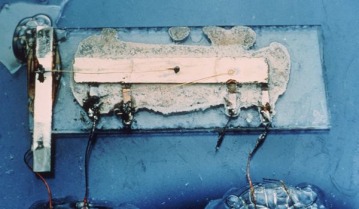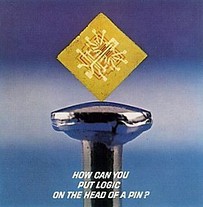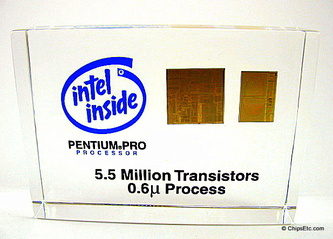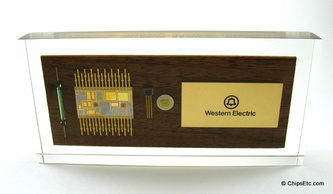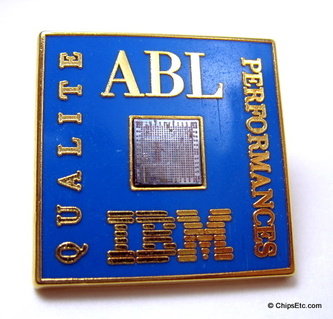Telegraphy
Developed in the 1830s and 1840s by Samuel Morse (1791-1872) and other inventors, the telegraph revolutionized long-distance communication. It worked by transmitting electrical signals over a wire laid between stations. In addition to helping invent the telegraph, Samuel Morse developed a code (bearing his name) that assigned a set of dots and dashes to each letter of the English alphabet and allowed for the simple transmission of complex messages across telegraph lines. In 1844, Morse sent his first telegraph message, from Washington, D.C., to Baltimore, Maryland; by 1866, a telegraph line had been laid across the Atlantic Ocean from the U.S. to Europe. Although the telegraph had fallen out of widespread use by the start of the 21st century, replaced by the telephone, fax machine and Internet, it laid the groundwork for the communications revolution that led to those later innovations.
Telephone
In the 1870s, two inventors Elisha Gray and Alexander Graham Bell both independently designed devices that could transmit speech electrically (the telephone). Both men rushed their respective designs to the patent office within hours of each other, Alexander Graham Bell patented his telephone first. Elisha Gray and Alexander Graham Bell entered into a famous legal battle over the invention of the telephone, which Bell won.
Although a highly successful system, the telegraph,
with its dot-and-dash Morse code, was basically limited to receiving
and sending one message at a time. Bell's extensive knowledge of the
nature of sound and his understanding of music enabled him to conjecture
the possibility of transmitting multiple messages over the same wire at
the same time. Although the idea of a multiple telegraph had been in
existence for some time, Bell offered his own musical or harmonic
approach as a possible practical solution. His "harmonic telegraph" was
based on the principle that several notes could be sent simultaneously
along the same wire if the notes or signals differed in pitch.
Alexander Graham Bell - Talk with Electricity
By October 1874, Bell's research had progressed to the extent that he could inform his future father-in-law, Boston attorney Gardiner Greene Hubbard, about the possibility of a multiple telegraph. Hubbard, who resented the absolute control then exerted by the Western Union Telegraph Company, instantly saw the potential for breaking such a monopoly and gave Bell the financial backing he needed. Bell proceeded with his work on the multiple telegraph, but he did not tell Hubbard that he and Thomas Watson, a young electrician whose services he had enlisted, were also exploring an idea that had occurred to him that summer - that of developing a device that would transmit speech electrically.While Alexander Graham Bell and Thomas Watson worked on the harmonic telegraph at the insistent urging of Hubbard and other backers, Bell nonetheless met in March 1875 with Joseph Henry, the respected director of the Smithsonian Institution, who listened to Bell's ideas for a telephone and offered encouraging words.Alexander Graham Bell - Evolution of the Telegraph into the Telephone
The telegraph and telephone are both wire-based electrical systems, and Alexander Graham Bell's success with the telephone came as a direct result of his attempts to improve the telegraph.When Bell began experimenting with electrical signals, the telegraph had been an established means of communication for some 30 years.
Spurred on by Henry's positive opinion, Bell and
Watson continued their work. By June 1875 the goal of creating a device
that would transmit speech electrically was about to be realized. They
had proven that different tones would vary the strength of an electric
current in a wire. To achieve success they therefore needed only to
build a working transmitter with a membrane capable of varying
electronic currents and a receiver that would reproduce these variations
in audible frequencies.
First Sounds - Twang
On June 2, 1875, Alexander Graham Bell while experimenting with his technique called "harmonic telegraph" discovered he could hear sound over a wire. The sound was that of a twanging clock spring.Bell's greatest success was achieved on March 10, 1876, marked not only the birth of the telephone but the death of the multiple telegraph as well. The communications potential contained in his demonstration of being able to "talk with electricity" far outweighed anything that simply increasing the capability of a dot-and-dash system could imply.First Voice - Mr. Watson, come here. I want to see you.
Alexander Graham Bell's notebook entry of 10 March 1876 describes his successful experiment with the telephone. Speaking through the instrument to his assistant, Thomas A. Watson, in the next room, Bell utters these famous first words, "Mr. Watson -- come here -- I want to see you."Alexander Graham Bell - Brief Biography
Born on March 3, 1847, in Edinburgh, Scotland, Alexander Graham Bell was the son and grandson of authorities in elocution and the correction of speech. Educated to pursue a career in the same specialty, his knowledge of the nature of sound led him not only to teach the deaf, but also to invent the telephone.Alexander Graham Bell - Other Inventions
Bell's unceasing scientific curiosity led to invention of the photophone, to significant commercial improvements in Thomas Edison's phonograph, and to development of his own flying machine just six years after the Wright Brothers launched their plane at Kitty Hawk. As President James Garfield lay dying of an assassin's bullet in 1881, Bell hurriedly invented a metal detector in an unsuccessful attempt to locate the fatal slug.Computer

Eniac Computer
The first substantial computer was the giant ENIAC machine by John W. Mauchly and J. Presper
Eckert at the University of Pennsylvania. ENIAC (Electrical Numerical
Integrator and Calculator) used a word of 10 decimal digits instead of binary
ones like previous automated calculators/computers. ENIAC was also the first
machine to use more than 2,000 vacuum tubes, using nearly 18,000 vacuum tubes.
Storage of all those vacuum tubes and the machinery required to keep the cool
took up over 167 square meters (1800 square feet) of floor space. Nonetheless,
it had punched-card input and output and arithmetically had 1 multiplier, 1
divider-square rooter, and 20 adders employing decimal "ring counters," which
served as adders and also as quick-access (0.0002 seconds) read-write register
storage.
The executable instructions composing a program were embodied in the separate
units of ENIAC, which were plugged together to form a route through the
machine for the flow of computations. These connections had to be redone for
each different problem, together with presetting function tables and switches.
This "wire-your-own" instruction technique was inconvenient, and only with
some license could ENIAC be considered programmable; it was, however,
efficient in handling the particular programs for which it had been designed.
ENIAC is generally acknowledged to be the first successful high-speed
electronic digital computer (EDC) and was productively used from 1946 to 1955.
A controversy developed in 1971, however, over the patentability of ENIAC's
basic digital concepts, the claim being made that another U.S. physicist, John
V. Atanasoff, had already used the same ideas in a simpler vacuum-tube device
he built in the 1930s while at Iowa State College. In 1973, the court found in
favor of the company using Atanasoff claim and Atanasoff received the
acclaim he rightly deserved.
Progression of Hardware
In the 1950's two devices would be invented that would improve the computer
field and set in motion the beginning of the computer revolution. The first of these
two devices was the transistor. Invented in 1947 by William Shockley, John
Bardeen, and Walter Brattain of Bell Labs, the transistor was fated to oust
the days of vacuum tubes in computers, radios, and other electronics.
Vacuum tubes were highly inefficient, required a great deal of space, and
needed to be replaced often. Computers of the 1940s and 50s had 18,000 tubes in them
and housing all these tubes and cooling the rooms from the heat produced by
18,000 tubes was not cheap. The transistor promised to solve all of these
problems and it did so. Transistors, however, had their problems too. The
main problem was that transistors, like other electronic components, needed to
be soldered together. As a result, the more complex the circuits became, the
more complicated and numerous the connections between the individual
transistors and the likelihood of faulty wiring increased.
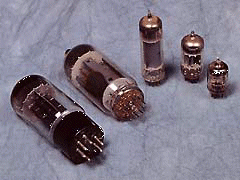
In 1958, this problem too was solved by Jack St. Clair Kilby of Texas
Instruments. He manufactured the first integrated circuit or chip. A chip is
really a collection of tiny transistors which are connected together when the
transistor is manufactured. Thus, the need for soldering together large
numbers of transistors was practically nullified; now only connections were
needed to other electronic components. In addition to saving space, the speed
of the machine was now increased since there was a diminished distance that
the electrons had to follow.
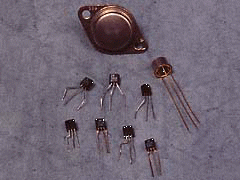
Mainframes to PCs
The 1960s saw large mainframe computers become much more common in large
industries and with the US military and space program. IBM became the
unquestioned market leader in selling these large, expensive,
error-prone,
and very hard to use machines.
A veritable explosion of personal
computers occurred in the early 1970s, starting with Steve Jobs and
Steve Wozniak exhibiting the
first Apple II at the First West Coast Computer Faire in San Francisco.
The
Apple II boasted built-in BASIC programming language, color graphics,
and a 4100 character memory
for only $1298. Programs and data could be stored on an everyday
audio-cassette recorder. Before the end of the fair, Wozniak and Jobs
had secured
300 orders for the Apple II and from there Apple just took off. Also introduced in 1977 was the TRS-80. This was a home computer manufactured by
Tandy Radio Shack. In its second incarnation, the TRS-80 Model II, came
complete with a 64,000 character memory and a disk drive to store programs and
data on. At this time, only Apple and TRS had machines with disk drives.
With the introduction of the disk drive, personal computer applications took
off as a floppy disk was a most convenient publishing medium for distribution
of software.
By 1984, Apple and IBM had come out with new models. Apple released the first
generation Macintosh, which was the first computer to come with a graphical
user interface(GUI) and a mouse. The GUI made the machine much more
attractive to home computer users because it was easy to use. Sales of the
Macintosh soared like nothing ever seen before. IBM was hot on Apple's tail
and released the 286-AT, which with applications like Lotus 1-2-3, a
spreadsheet, and Microsoft Word, quickly became the favourite of business
concerns.
That brings us up to about ten years ago. Now people have their own personal
graphics workstations and powerful home computers. The average computer
a person might have in their home is more powerful by several orders of
magnitude than a machine like ENIAC. The computer revolution has been
the fastest growing technology in man's history.


Transistor
The transistor is an influential little invention that changed the course of history in a big way for computers and all electronics.
History of Computers
You can look at a computer as being made of many different inventions or components. We can name four key inventions that made a huge impact on computers. An impact large enough that they can be referred to as a generation of change.The first generation of computers depended upon the invention of vacuum tubes; for the second generation it was transistors; for the third it was the integrated circuit; and the fourth generation of computers came about after the invention of the microprocessor.The Impact of Transistors
Transistors transformed the world of electronics and had a huge impact on computer design. Transistors made of semiconductors replaced tubes in the construction of computers. By replacing bulky and unreliable vacuum tubes with transistors, computers could now perform the same functions, using less power and space.Before transistors, digital circuits were composed of vacuum tubes.
The story of ENIAC computer speaks volumes about the disadvantages of vacuum tubes in computers.
A transistor is a device composed of semi-conductor materials (germanium and silicon)
that can both conduct and insulate Transistors switch and modulate
electronic current. The transistor was the first device designed to act
as both a transmitter, converting sound waves into electronic waves, and
resistor, controlling electronic current.The name transistor comes from the 'trans' of transmitter and 'sistor' of resistor.
The Transistor Inventors
John Bardeen, William Shockley, and Walter Brattain, were all scientists at the Bell Telephone Laboratories in Murray Hill, New Jersey. They were researching the behavior of germanium crystals as semi-conductors in an attempt to replace vacuum tubes as mechanical relays in telecommunications. The vacuum tube, used to amplify music and voice, made long-distance calling practical, but the tubes consumed power, created heat and burned out rapidly, requiring high maintenance.The team's research was about to come to a fruitless end when a last attempt to try a purer substance as a contact point lead to the invention of the first "point-contact" transistor amplifier. Walter Brattain and John Bardeen were the ones who built the point-contact transistor, made of two gold foil contacts sitting on a germanium crystal. When electric current is applied to one contact, the germanium boosts the strength of the current flowing through the other contact. William Shockley improved upon their work creating a junction transistor with "sandwiches" of N- and P-type germanium. In 1956, the team received the Nobel Prize in Physics for the invention of the transistor.In 1952, the junction transistor was first used in a commercial product, a Sonotone hearing aid. In 1954, the first transistor radio, the Regency TR1 was manufactured.
John Bardeen and Walter Brattain took out a patent for their transistor. William Shockley applied for a patent for the transistor effect and a transistor amplifier.
Satellite
Arthur C. Clark wrote the first well-known article on communication satellites. "Extra-Terrestrial Relays" was published in Wireless World in 1945. In the article, Clark discussed geosynchronous earth orbit and the possibility of covering the earth with three satellites.The actual journey into space began October 4, 1957, when the Soviet Union launched Sputnik 1, the world's first orbital spacecraft, which orbited the world for three months. A month later the Soviets launched Sputnik 2 and its passenger Laika, a dog who has the distinction of being the first known living creature to escape earth and enter outerspace. The space race was on, and in February of 1958, the United States launched Explorer 1.
The first communication satellite was launched on December 18, 1958. Signal Communication by Orbital Relay (SCORE), which broadcasted a Christmas message from President Eisenhower - "Peace on Earth, Good will toward men" - orbited the earth for 12 days until the batteries failed. The main purpose of the SCORE project was to prove that an atlas missile could be put into orbit.
Combined, the U.S. and U.S.S.R. launched six satellites in 1958, 14 satellites in 1959, 19 in 1960 and 35 in 1961. In 1962, the United Kingdom and Canada launched satellites of their own, along with the 70 satellites launched by the U.S. and U.S.S.R.
On August 12, 1960, the United States launched Echo 1, a passive reflector satellite with no amplification possibilities. Echo 1 could only reflect the radiation back to earth. At the time of its launch, it was thought that passive reflector satellites could serve a purpose in communications, but the technology was soon abandoned.
Bell Telephone Laboratories assisted in the Echo 1 project. Knowledge gained working on Echo 1 helped Bell to develop Telstar, an experimental satellite that relayed television signals. Telstar was launched into medium earth orbit in 1962. In the six months following the launch, stations in the United States, Britain and France conducted about 400 transmissions with multichannel telephone, telegraph, facsimile and television signals, and they performed over 250 technical tests and measurements.
Near complete Earth coverage (excluding polar areas) was achieved with the development of Intelsat and the launching of satellites into geosynchronous earth orbit over the Atlantic (1965), Pacific (1967), and Indian oceans (1969). A combination of more than 130 governments and international organization control Intelsat. Intelsat, along with Inmarsat, which is used in international shipping, is open to use by all nations. The Intelsat consortium owns the satellites, but each nation owns their own earth stations. In 1997 Intelsat had 19 satellites in geostationary orbit.
NASA led the new wave of communication satellite technology with the launch of Advanced Communications Technology Satellites (ACTS) in 1993. ACTS pioneered the use of spot beams, on-board storage and processing, and all digital transmission, which combined made a successful communication satellite constellation more feasible. Each of these innovations serve a certain technological purpose that makes and internet in the sky more likely.
- Spot beams subdivide a satellite's footprint which allows the satellite to use its portion of the spectrum more efficiently
- On-board storage and processing allows for inter-satellite communication and the caching of information until a spot beam finds its target
- All-digital transmission allows a satellite to incorporate error codes into its signal which helps to overcome rain fade.
Not all of these companies will be able to make it in space, and Motorola has already failed with their 66 satellite system, Iridium, which was supposed to provide mobile telephone service. But if they succeed, accessing to their internet will be possible no matter where you are.
Integrate Circuit
The first successful demonstration of the microchip was on September 12, 1958 by Jack Kilby of Texas Instruments.The first commercially available integrated circuits were manufactured by Fairchild Semiconductor Corporation in 1961.
Better known to the layperson as a computer chip, IC or microchip, just about every electronic device you use today depends on the integrated circuit - from computers to smartphones, televisions, automobiles, household appliances, even traffic signals, the list is endless.
The development of the integrated circuit was a huge event in the history of computing. Without this technology, it's unlikely that personal computers and handheld computing devices would have been developed and produced as early as they were.
The Need for the Integrated Circuit
No doubt you are familiar with early computers, monstrosities whose CPU took up whole rooms and were largely owned by government labs and research universities. These early computers depended on vacuum tubes to amplify electrical signals throughout the machine. Vacuum tubes were large, made of glass, and required regular maintenance: not exactly something that could be put into a consumer device. To top it off, they made the electrical signal very slow, reducing these supercomputers to the equivalent of today's pocket calculator. The vacuum tube left much to be desired, and put inventors on a mission to find better ways to amplify electrical signals.
Transistors, which first came into use in the 1940's, had an obvious edge on vacuum tubes. They could make the current flow faster, thus promoting computing power, and they were also smaller. Their downside? Transistors had to be linked together in a circuit without any errors, or the computer would not function correctly. This still limited the complexity of computers that could be based on transistor circuits.
The invention of the integrated circuit goes to Jack Kilby, an and employee of Texas Instruments. In 1958, Kilby was tasked with developing an improved circuit for his employers products. However, the direction for the circuit that his boss wanted to follow was not that of the integrated circuit; Kilby waited until his co-workers were on vacation to pursue his idea of putting all elements of a circuit on one small chip. He finished his prototype, which he presented upon their return. The prototype was tested and it worked: Kilby's invention was deemed a success.
Robert Noyce, also credited as an initial inventor of the integrated circuit, made an important improvement upon Kilby's initial design. He made the alteration of adding a thin layer of metal to the chip, to better connect all the various components on the circuit.
Interestingly, an English inventor also described the initial idea for the integrated circuit, independent of Kilby and Noyce. The engineer, Geoffrey Drummer, envisaged a single circuit with all the components placed together on a layer of silicon. In fact, Drummer is credited as the first to ever describe an integrated circuit, at a talk in Washington, D.C.; however, no British corporations or the military were interested in developing his idea.
Generations of Integrated Circuits
1st - Small scale integration (SSI):
had 3 to 30 transistors/chip. Early 1960s 2nd - Medium scale integration (MSI): had 30 to 300 transistors/chip. Late 1960s 3rd - Large scale integration (LSI): had 300 to 3,000 transistors/chip. Mid 1970s 4th - Very large scale integration (VLSI): had more than 3,000 transistors/chip. Early 1980s 5th - Ultra Large Scale integration (ULSI): had more than one million transistors/chip. Mid 1980s 1st Generation Integrated Circuits in the 1960's were vital to early aerospace projects The Minuteman missile and the Apollo program both needed lightweight digital computers for their inertial guidance systems. The Integrated Circuit technology development was led by the Apollo guidance computer, while the Minuteman missile bolstered it into mass-production. The purchase of almost all of the available integrated circuits from 1960 through 1963 was from these aerospace programs, and basically provided the demand that funded the production improvements. In turn, this demand was responsible for lowering the production costs from $1000 per Integrated Circuit (in 1960 dollars) to a mere $25 per Integrated Circuit (in 1963 dollars). Integrated Circuits began to be used in consumer products at the turn of the decade, for example in FM inter-carrier sound processing in television receivers. |





